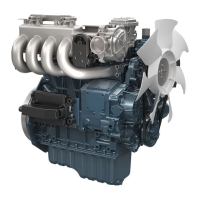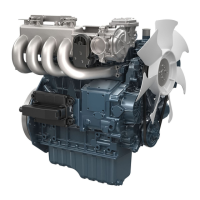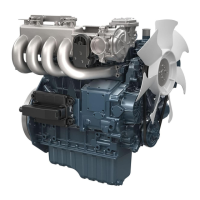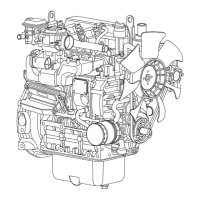CHECK AND MAINTENANCE
1. Daily check points
1.1 Checking engine oil level
IMPORTANT
• When
using
an
oil of different maker or
viscosity from the previous, drain old oil. Never
mix two different types of oil.
NOTE
• Be sure to
inspect the engine, locating it on a
horizontal place. If placed on gradients,
accurately, oil quantity may not be measured.
• Be sure to keep the oil level between upper and
lower limits of the dipstick. Too much oil may
cause a drop in output or excessive blow-by
gas. On the closed breather type engine in
which mist is sucked through port, too much oil
may caused oil hammer. While too little oil, may
seize the engine's rotating and sliding parts.
1. Level the engine.
2. To check the oil level, draw out the dipstick (1), wipe
it clean, reinsert it, and draw it out again. Check to
see that the oil level lies (A) between the two
notches.
(1) Dipstick (A) Oil level
3. If the level is too low, add new oil to the specified
level.
1.2 Checking and fill coolant
CAUTION
• Do not remove
the radiator cap until coolant
temperature is below its boiling point. Then
loosen the cap slightly to relieve any excess
pressure before removing the cap completely.
IMPORTANT
• During filling the
coolant, air must be vented
from the engine coolant passages. The air vents
by jiggling the radiator upper and lower hoses.
• Be sure to close the radiator cap securely. If the
cap is loose or improperly closed, coolant may
leak out and the engine could overheat.
• Do not use an antifreeze and scale inhibitor at
the same time.
• Never mix the different type or brand of L.L.C.
1. If the engine doesn't equip the recovery tank,
remove the radiator cap (1) and check to see that
the coolant level is just below the port.
(1) Radiator cap
If the engine equips the recovery tank (2), check to
see that the
coolant level lies between full (A) and
low (B).
(2) Recovery tank
(A) Full
(B) Low
CHECK AND MAINTENANCE
1. Daily check points 3. MAINTENANCE
05-E4B SERIES,05-E4BG SERIES
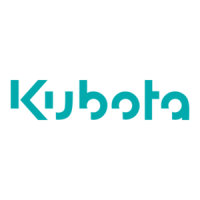
